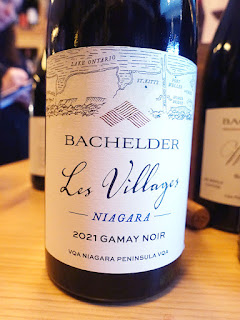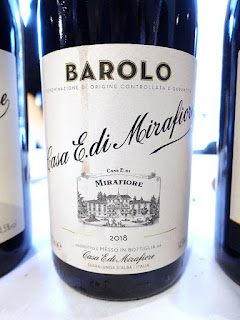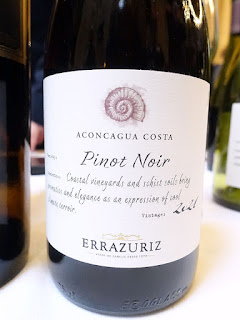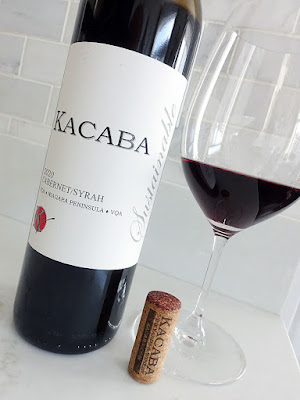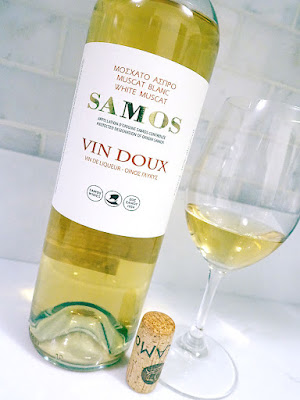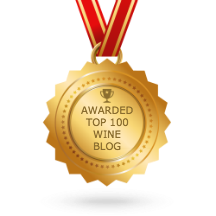Here's my top wine picks from the March 16, 2024 LCBO VINTAGES New Release Collection. With Easter long weekend on the horizon, the feature of this release is titled "Perfect Pairings for Family Feasts". Overall, it is a very good release, albeit on the small-ish side that is on-trend for the year, with 85 products on offer.
We'll begin with the feature on wines that are Perfect Pairings for Family Feasts. Of the seventeen wines that are included as part of the theme, six are included among my top wine picks. First up on the list is an excellent vintage Champagne that is crafted with 52% Pinot Noir and 48% Chardonnay that will be ideal for pairing with appetizers. For pairing wines with cheese, try the Sauvignon Blanc from Niagara, or the wine from Bierzo that is made with 93% Mencía and 3% Alicante Bouschet. The LCBO suggests serving the Gamay Noir from Niagara with veggies, although it is big enough to serve with richer dishes such as poultry, braises, or roasts. From Margaret River in Western Australia, the white wine crafted with 51% Sauvignon Blanc and 49% Sémillon can be paired with weighty and textured dishes such as those with rich sauces. The last wine from the feature is a Carmenère from Chile, which can be paired with well-seasoned, full-flavoured meals.
Red wine recommendations from the main release start in Italy with a Barolo that is, of course, crafted with 100% Nebbiolo, followed by the Gran Selezione Chianti Classico that is made with 100% Sangiovese. There's also a Rioja red that is composed of 86% Tempranillo, 8% Graciano, 4% Mazuelo, and 2% Garnacha, while the Rhône red is equal parts Grenache and Syrah. For Australian Shiraz wine lovers, the Clare Valley wine is made with 100% Shiraz, while the Frankland River Shiraz is blended with 4% Touriga Nacional, 4% Mourvedre, and 1% Viognier. And lastly, there is a fine Pinot Noir from Chile.
The only blend among my top white wine picks from the main release is the Soave from Veneto, which is composed of 85% Garganega and 15% Trebbiano di Soave. Among the mono-varietal wines, the Torrontés from Argentina, Chardonnay from Australia, and Sauvignon Blanc from Chile all underwent barrel fermentation. Other white wine picks include an organic, old vine Verdicchio from Marche, as well as an off-dry (i.e. lightly sweet) Riesling from Niagara. There's also the lusciously sweet Gewürztraminer Icewine from Niagara that would be ideal for post-dinner sips.
Enjoy my top wine recommendations from this release! Cheers!
We'll begin with the feature on wines that are Perfect Pairings for Family Feasts. Of the seventeen wines that are included as part of the theme, six are included among my top wine picks. First up on the list is an excellent vintage Champagne that is crafted with 52% Pinot Noir and 48% Chardonnay that will be ideal for pairing with appetizers. For pairing wines with cheese, try the Sauvignon Blanc from Niagara, or the wine from Bierzo that is made with 93% Mencía and 3% Alicante Bouschet. The LCBO suggests serving the Gamay Noir from Niagara with veggies, although it is big enough to serve with richer dishes such as poultry, braises, or roasts. From Margaret River in Western Australia, the white wine crafted with 51% Sauvignon Blanc and 49% Sémillon can be paired with weighty and textured dishes such as those with rich sauces. The last wine from the feature is a Carmenère from Chile, which can be paired with well-seasoned, full-flavoured meals.
Red wine recommendations from the main release start in Italy with a Barolo that is, of course, crafted with 100% Nebbiolo, followed by the Gran Selezione Chianti Classico that is made with 100% Sangiovese. There's also a Rioja red that is composed of 86% Tempranillo, 8% Graciano, 4% Mazuelo, and 2% Garnacha, while the Rhône red is equal parts Grenache and Syrah. For Australian Shiraz wine lovers, the Clare Valley wine is made with 100% Shiraz, while the Frankland River Shiraz is blended with 4% Touriga Nacional, 4% Mourvedre, and 1% Viognier. And lastly, there is a fine Pinot Noir from Chile.
The only blend among my top white wine picks from the main release is the Soave from Veneto, which is composed of 85% Garganega and 15% Trebbiano di Soave. Among the mono-varietal wines, the Torrontés from Argentina, Chardonnay from Australia, and Sauvignon Blanc from Chile all underwent barrel fermentation. Other white wine picks include an organic, old vine Verdicchio from Marche, as well as an off-dry (i.e. lightly sweet) Riesling from Niagara. There's also the lusciously sweet Gewürztraminer Icewine from Niagara that would be ideal for post-dinner sips.
Enjoy my top wine recommendations from this release! Cheers!
Red Wine:
- LAVAU CÔTES DU RHÔNE-VILLAGES 2019 - AC, France (#421024) (XD) - $16.95
- SAN PEDRO 1865 SELECTED VINEYARDS CARMENÈRE 2022 - Las Lagunas, DO Valle de Colchagua, Chile (#249201) (XD) - $19.95
- ERRÁZURIZ ACONCAGUA COSTA PINOT NOIR 2021 - Sustainable, DO Aconcagua Costa, Chile (#541151) (XD) - $22.95 91+ pts wine review
- JIM BARRY THE LODGE HILL SHIRAZ 2021 - Clare Valley, South Australia (#998476) (XD) - $23.95
- FRANKLAND ESTATE SHIRAZ 2020 - Frankland River, Western Australia (#15998) (XD) - $25.95
- BACHELDER LES VILLAGES GAMAY NOIR 2021 - VQA Niagara Peninsula, Ontario, Canada (#17239) (XD) - $26.95 92+ pts wine review
- DESCENDIENTES DE J. PALACIOS PÉTALOS 2021 - Old vines, DO Bierzo, Spain (#446484) (XD) - $28.95
- CLEMENTE VII GRAN SELEZIONE CHIANTI CLASSICO 2019 - Sustainable, DOCG, Tuscany, Italy (#573493) (XD) - $35.95 91+ pts wine review
- MARQUÉS DE MURRIETA FINCA YGAY RESERVA 2018 - DOCa Rioja, Spain (#209148) (XD) - $37.95
- CASA E. DI MIRAFIORE BAROLO 2018 - Vegan, DOCG, Piedmont, Italy (#26908) (XD) - $56.95 93 pts wine review
White Wine:
- SKUTTLEBUTT SAUVIGNON BLANC / SEMILLON 2022 - Margaret River, Western Australia (#47621) (XD) - $19.95
- HENRY OF PELHAM THE DRY RIVER RIESLING 2022 - Sustainable, VQA Short Hills Bench, Niagara Escarpment, Ontario, Canada (#557165) (D) - $19.95
- TRIUS DISTINCTION SAUVIGNON BLANC 2021 - VQA Niagara Peninsula, Ontario, Canada (#19379) (XD) - $19.95
- PIEROPAN SOAVE CLASSICO 2022 - DOC, Veneto, Italy (#946848) (XD) - $20.95
- SUSANA BALBO SIGNATURE BARREL FERMENTED TORRONTÉS 2022 - Valle de Uco, Mendoza, Argentina (#384339) (XD) - $22.95
- FORTES SAUVIGNON BLANC 2022 - WO Napier, South Africa (#33297) (XD) - $23.95 89 pts wine review
- ELDERTON EDEN VALLEY CHARDONNAY 2022 - Single vineyard, Eden Valley, South Australia (#15054) (XD) - $23.95 90+ pts wine review
- LEYDA LOT 4 SAUVIGNON BLANC 2021 - Valle de Leyda, Chile (#18997) (XD) - $25.95
- CASAL DI SERRA VECCHIE VIGNE VERDICCHIO DEI CASTELLI DI JESI CLASSICO SUPERIORE 2021 - DOC, Marche, Italy (#98111) (XD) - $26.95
Sparkling Wine:
- LANSON LE VINTAGE BRUT CHAMPAGNE 2012 - AC, France (#29949) (XD) - $99.95 94 pts wine review
Dessert Wine:
- LAKEVIEW CELLARS GEWÜRZTRAMINER ICEWINE 2019 - VQA Niagara Peninsula, Ontario, Canada (#547703, 200mL) (S) - $34.95 92+ pts wine review


